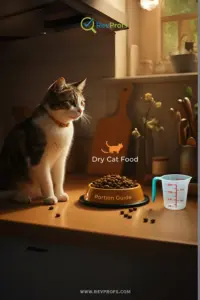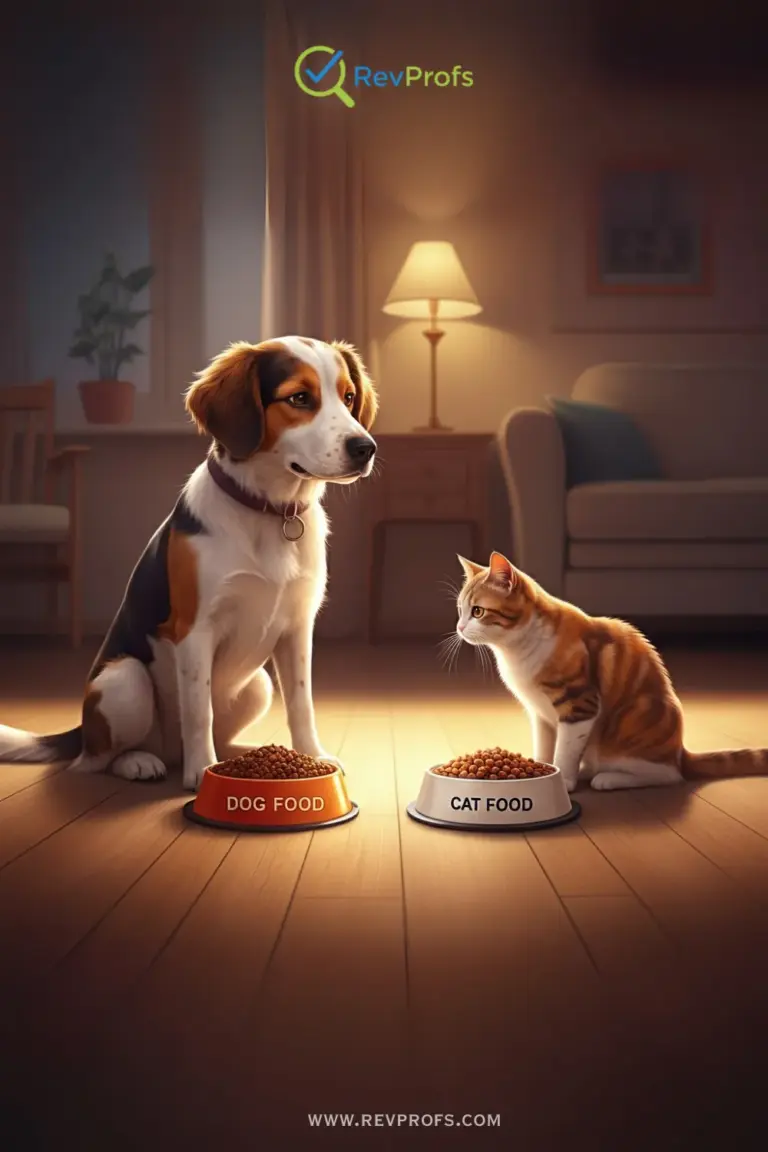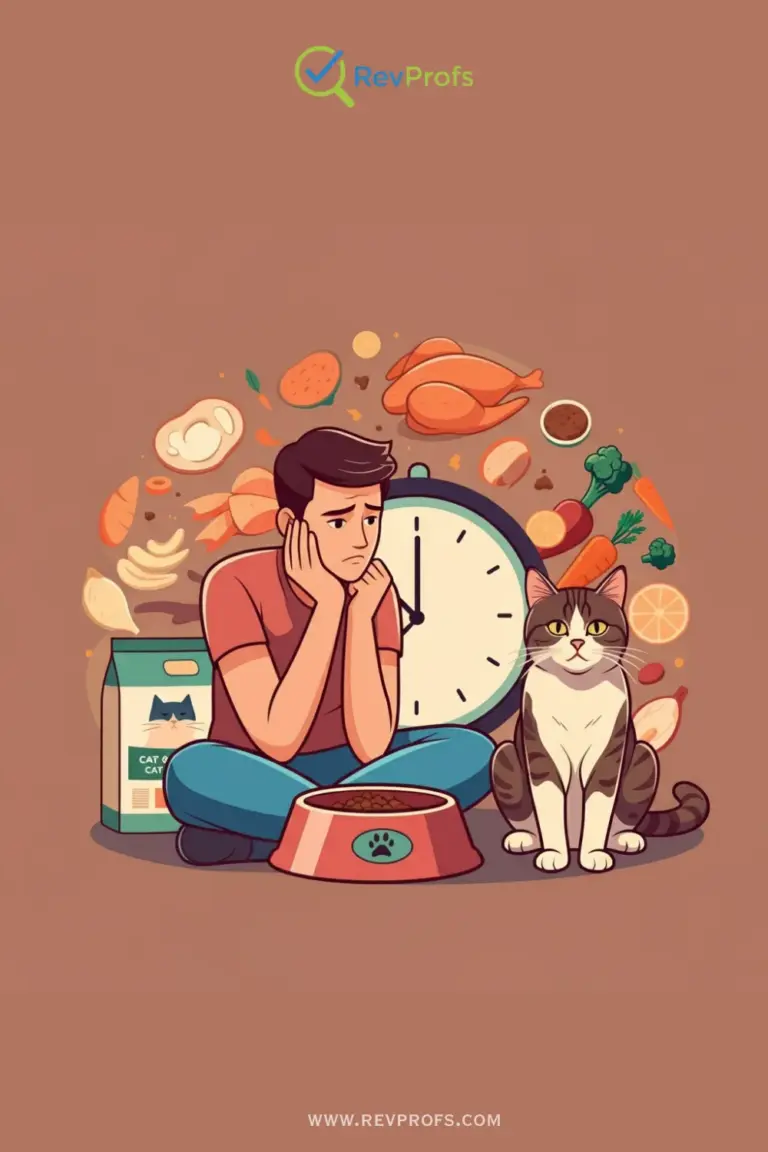How Much Dry Food to Feed a Cat: 5 Key Factors to Consider
Figuring out the right amount of food for your feline friend can feel like a bit of a puzzle. As a caring pet parent, you want to ensure they’re getting just what they need to stay healthy and happy. One of the most common questions we hear is, how much dry food to feed a cat? The answer isn’t a simple one-size-fits-all scoop, as it depends on several unique factors like your cat’s age, weight, and activity level. Getting it right is crucial for their long-term well-being.
Navigating feeding instructions can be confusing, but don’t worry, we’re here to help you make sense of it all. Understanding your cat’s specific needs is the first step toward creating the perfect meal plan. Let’s break down the process together, ensuring you feel confident and supported in providing the best nutrition for your furry family member.
Understanding the Basics: Your Cat Food Feeding Guide
Before you can determine the right portion size, it’s essential to start with the cat food feeding guide on the packaging. This chart is your primary point of reference. Manufacturers formulate these guidelines based on the specific calorie content and nutrient density of their food. Typically, these charts recommend daily feeding amounts based on a cat’s weight.
However, think of this guide as a starting point, not a strict rule. It’s a fantastic baseline, but it often assumes an “average” cat with a “normal” activity level. As any cat owner knows, there’s no such thing as an average cat! Some are couch potatoes, while others have endless energy, zipping around the house at all hours.
Here’s how to interpret a typical feeding guide:
- Find Your Cat’s Weight: Locate your cat’s current weight on the chart. If your cat is overweight, your vet might recommend feeding for their ideal weight instead of their current one.
- Identify the Daily Amount: The chart will list a recommended daily portion, usually in cups or grams. Remember, this is the total amount for a 24-hour period, not for a single meal.
- Divide by Meals: Divide that total daily amount by the number of meals you plan to serve. Most vets recommend feeding adult cats two meals per day, about 12 hours apart.
Using a measuring cup is crucial for accuracy. Simply “eyeballing” the amount can easily lead to overfeeding, which is a primary contributor to pet obesity.
How Much Dry Food to Feed a Cat?
So, let’s get to the core question: how much dry food to feed a cat? After consulting the packaging guide, the next step is to adjust that amount based on your individual cat’s needs. Several key factors influence their caloric requirements, and tailoring their portions accordingly will help them maintain a healthy body condition.
The most important factors to consider are:
- Age: A growing kitten has vastly different needs than a laid-back senior cat.
- Weight & Body Condition: Is your cat at a healthy weight, or are they underweight or overweight?
- Activity Level: An active, playful cat will burn more calories than a sedentary one.
- Metabolism: Just like people, some cats have a naturally faster metabolism.
- Spay/Neuter Status: Spayed or neutered cats often have a slower metabolism and may require fewer calories.
By taking these elements into account, you can move from a generic recommendation to a personalized meal plan that truly supports your cat’s health.

Calculating Cat Food Needs for Different Life Stages
A cat’s nutritional needs change dramatically as they move through life. The right amount of food for a kitten would be far too much for a senior, and vice-versa.
How Much to Feed a Kitten
Kittens are little bundles of energy and are growing at an incredible rate. Their tiny bodies need a lot of fuel to support the development of strong bones, muscles, and organs. This is why it’s so important to know how much to feed a kitten. They require more calories, protein, and fat per pound of body weight than adult cats.
- Food Type: Always choose a high-quality food specifically formulated for kittens. These foods are packed with the nutrients they need to thrive.
- Feeding Schedule: Kittens have small stomachs and need to eat small, frequent meals. From about six weeks to six months of age, it’s best to feed them three to four times a day.
- Free-Feeding: Some owners choose to “free-feed” kittens, leaving dry food out for them to graze on throughout the day. This can work well for young kittens who are good at self-regulating. However, you should still measure the total daily amount to monitor their intake.
As your kitten approaches their first birthday, you can gradually transition them to an adult cat food and reduce feedings to twice a day.
Adult Cat Feeding Chart
For adult cats (typically ages one to seven), the main goal is maintenance. You want to provide enough calories to maintain a healthy weight and energy level, but not so many that they become overweight. An adult cat feeding chart from the food packaging is your guide.
A general rule of thumb for a typical 10-pound indoor adult cat is about 1/2 to 2/3 of a cup of dry food per day. But again, this is just an estimate. An extremely active cat might need more, while a less active one might need less.
The best way to tell if you’re feeding the right amount is by monitoring your cat’s body condition. You should be able to feel their ribs with a light touch, but not see them. When viewed from above, they should have a visible waistline. If you’re unsure, your vet can show you how to assess their body condition score.
Senior Cat Food Amounts
As cats enter their golden years (around age seven and up), their metabolism often slows down, and they tend to be less active. This means their calorie needs decrease. The right senior cat food amounts are crucial to prevent weight gain, which can put extra stress on aging joints.
- Choose a Senior Formula: Cat foods designed for seniors are often lower in calories and may contain supplements like glucosamine for joint health.
- Monitor Weight: Keep a close eye on their weight and body condition. It’s common for seniors to either gain or lose weight, and any sudden change warrants a call to the vet.
- Smaller, More Frequent Meals: Some older cats do better with smaller, more frequent meals, as it can be easier on their digestive system.
It’s also important to ensure senior cats are getting enough hydration, as kidney function can decline with age. Combining dry food with some wet food is a great way to increase their water intake.
Fine-Tuning Your Cat’s Dry Cat Food Portions
Once you have a baseline from the life stage guidelines, you can start calculating cat food needs with more precision. This is where your observation skills as a pet parent come in handy.
Pay close attention to your cat’s behavior and physical appearance. If you start your cat on half a cup of food per day but notice they are gaining weight, you may need to reduce their dry cat food portions slightly. Conversely, if your cat seems overly hungry or is losing weight, you may need to increase the amount.
Make any adjustments gradually, by about 10-15%, and monitor them for a couple of weeks before making another change. Quick, drastic changes in food amount can upset their digestive system.
If you want a more scientific approach, you can work with your vet to calculate your cat’s Resting Energy Requirement (RER). This formula determines the base number of calories a pet needs just to exist. Your vet can then use a multiplier based on your cat’s activity level and neuter status to find a more precise daily calorie target. This personalized approach takes the guesswork out and ensures your cat is getting exactly what they need.
A Note on Grain-Free Dry Cat Food
In recent years, grain-free dry cat food has become very popular. The marketing suggests that these formulas are more natural and closer to a cat’s ancestral diet. While cats are obligate carnivores and don’t require carbohydrates, many can digest them just fine.
There is no scientific evidence that grain-free diets are inherently healthier for most cats. The most important factor in choosing a food is that it is complete, balanced, and made by a reputable manufacturer. Some cats may have specific grain allergies, but this is rare. The primary allergens for cats are typically proteins like chicken or fish.
If you choose a grain-free diet, the principles of feeding remain the same. Pay attention to the calorie content, as some grain-free formulas can be very calorie-dense. Always follow the feeding guide and adjust based on your cat’s individual needs. If you’re considering a switch, it’s always a good idea to chat with your veterinarian first to make sure it’s the right choice for your cat.
Ultimately, providing your cat with the right nutrition is an act of love. By paying attention to the guides, observing your cat, and working with your vet, you can create a feeding plan that supports a long, healthy, and happy life together.
Ready for the Next Step?
Your pet's journey doesn't end here. Explore our expert guides to ensure they get the best care at every stage.
Puppy & Dog Care
From choosing the right food to understanding their behavior, our dog care guides cover everything you need to know.
Explore Dog GuidesGear & Product Reviews
Find honest, in-depth reviews on the latest pet gear, from smart collars to durable toys, and make informed decisions.
See All Reviews




